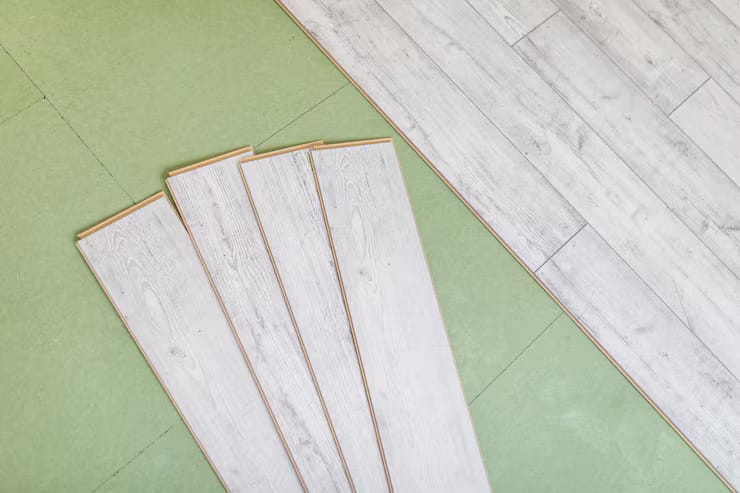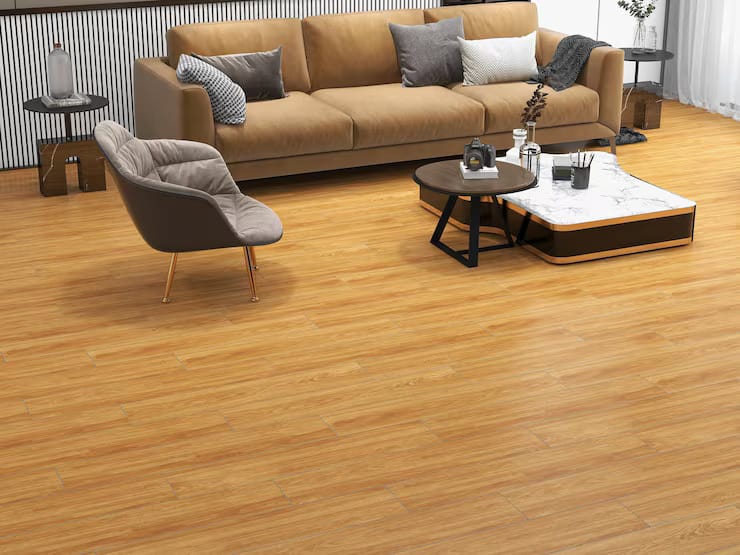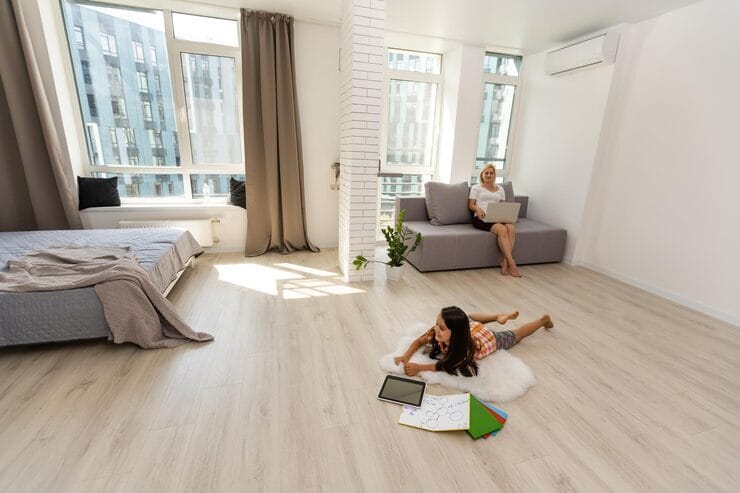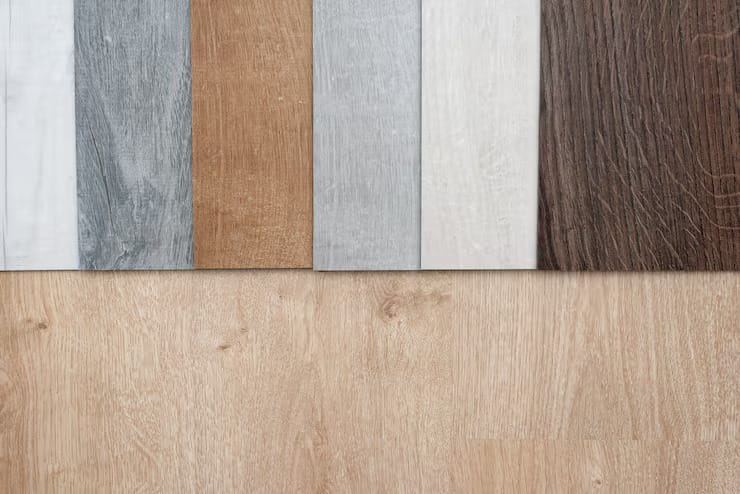- 10% Off Flooring Services
- Free Estimates

Vinyl plank flooring has become one of the most popular flooring options for homeowners today. It’s affordable, durable, water-resistant, and comes in a wide variety of designs that mimic natural wood. Yet, despite its advantages, one important detail often gets overlooked during installation: the direction of the planks.
Let’s explore how to decide the best direction to lay vinyl plank flooring.
✔ Plank direction affects how spacious a room feels, how light reflects, and how smoothly spaces connect, while also ensuring stability.
✔ Planks usually look best parallel to the longest wall or main light source, but room shape and size may call for adjustments.
✔ You can install planks in both directions with transitions, but use this approach carefully to keep your design cohesive.
✔ Living rooms and bedrooms benefit from planks parallel to the longest wall, kitchens align well with cabinets, and narrow spaces like bathrooms look larger with lengthwise planks.
When wondering which direction to lay vinyl plank flooring, remember that it’s not just a design choice—it also has practical implications. In fact, the global vinyl flooring market is projected to reach USD 63.8 billion by 2035, highlighting its growing popularity.

If you’re debating which direction to install vinyl plank flooring, the general rule is to lay the planks parallel to the longest wall or in the same direction as the primary light source.
For example, in a living room with a large picture window, laying the planks parallel to the window will create a visually balanced effect. Similarly, in a long rectangular room, installing planks lengthwise enhances the sense of spaciousness.
However, rules are meant to be adjusted depending on your space. A small square room may look better with planks running side-to-side to give the illusion of width. Always take into account your home’s unique dimensions.
Homeowners often wonder: Can you install vinyl plank flooring in both directions? The short answer: yes, but it requires thoughtful planning.
Changing directions can help define different zones in an open floor plan. For example, you might want the living room planks running parallel to natural light while turning the planks in the dining area for a distinct look.
To achieve this, transition strips or T-moldings are typically used. These create a clean break while allowing expansion and contraction.
While you can install vinyl plank flooring in both directions, overusing direction changes can create a disjointed look. Use this technique sparingly and strategically.
The best direction to lay vinyl plank flooring often depends on size, shape, and functionality. Another factor many homeowners appreciate is affordability. For instance, vinyl plank flooring typically ranges from $3 to $18 per square foot.
In wide, open areas, vinyl plank hallway direction generally looks best running parallel to the longest wall. This enhances flow and avoids unnecessary breaks in the pattern. It also aligns with natural light from windows and doors, giving the space a clean, continuous look.
For bedrooms, comfort and symmetry play a role. Lay planks parallel to the longest wall, often where the bed is placed. This creates visual calmness and makes furniture placement look intentional.
Since these are high-traffic zones, practicality is key. The best direction is usually toward the main entryway or aligned with cabinets to create structure. Consistency with adjoining spaces, like the living room, is also important.
Small rooms benefit from plank direction that maximizes perceived space. Running planks lengthwise can make narrow bathrooms feel less cramped.

To achieve a flawless look:
Vinyl flooring can be installed vertically or horizontally depending on the room. Vertical installation along the longest wall makes a room appear larger, while horizontal installation can make a narrow space feel wider.
Vinyl plank hallway direction should run lengthwise down the hallway. This direction creates a seamless flow and makes the hallway look longer.
It’s best to start laying vinyl plank flooring from a corner that allows you to work along the longest straight wall. This ensures fewer cuts and a cleaner finish.
The most popular and practical pattern is a staggered layout, where plank ends are offset. This creates a natural wood look and adds strength to the floor.
Ideally, yes. Running vinyl flooring in the same direction throughout the home creates visual continuity, but it can be changed in certain rooms to define separate spaces.

At Carmel Flooring Company, we’re here to help you every step of the way. We have the best selection of vinyl flooring in Carmel, NY, and our knowledgeable team can guide you to the perfect option for your home or office. Plus, with our professional installation services, you can feel confident knowing your new floor will be laid correctly.
Contact us today!